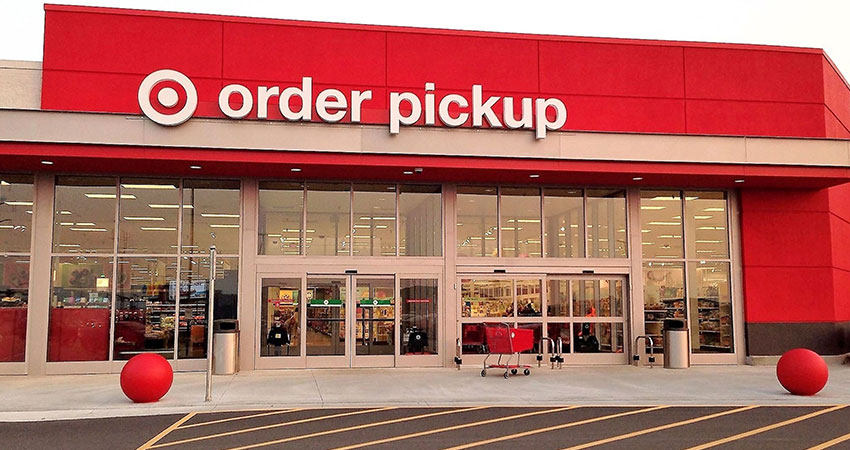Target found the COVID-19 outbreak to be a two-edged sword in the first quarter, driving stratospheric ecommerce sales growth of 141%, while impacting profits due to about $500 million in associated costs, the company reported.
The department store chain also saw over 5 million customers shop on Target.com for the first time in Q1, with 2 million of them doing curbside pickup. It is also already seeing benefits from its acquisition of technology from Deliv in a going-out-of-business sale, utilizing it as part of a plan to create dedicated sortation centers to create last mile efficiencies.
Target’s Q1 net income was $284 million or 56 cents per share, down from $795 million or $1.53 per share in 2019; analysts had forecast 40 cents a share. Revenue was up 11.3% to $19.62 billion, compared to $17.63 billion a year earlier, ahead of the estimate of $19.04 billion.
In the month of April alone, Target captured over $1.1 billion in sales growth compared to 2019, with over $950 million of that tied to store fulfillment, either shipped to customers’ homes or pickup up at the store, according to CEO Brian Cornell. He added on an average day in April, Target was fulfilling more online orders than on Cyber Monday 2019.
Cornell said Target’s sales in Q1 tracked along with consumer trends as the COVID-19 crisis progressed and lockdown orders were issued. At the end of February, he said, spending on discretionary categories remained strong even as shoppers stocked up on food and essentials. By mid-March, the mix was focused on food, beverages and essentials, as discretionary categories fell off, especially apparel.
“As shelter in place rules were adopted across the country, guests began to pull back on store trips, and we saw a dramatic surge in digital traffic and sales,” Cornell said. “We also began seeing higher demand for products oriented around staying at home, including home office products, video games, puzzles and board games, along with the housewares and kitchenware in our home assortment.”
By mid-April, Cornell said, Target saw a rapid increase in store traffic and sales, “and a broad surge in more discretionary categories including apparel, which persisted throughout the end of the month.”
John Mulligan, EVP and COO of Target, told analysts on an earnings call that orders shipped from store or picked up increased nearly 150% in the first quarter compared to 2019. Orders fulfilled by Shipt were up more than 300%, curbside pickup increased more than 600% higher than a year ago.
“In April, sales on Drive-Up (curbside) increased nearly 1,000% compared with a year ago,” Mulligan said. “These growth numbers reflect the fact that Drive-Up continues to be our most popular service. And the number of guests who are trying than repeatedly using Drive-Up continues to increase rapidly.”
Mulligan walked through the various supply chain and fulfillment infrastructure changes and investments Target has made in recent years, and how it’s paying out now as the pandemic has stress tested operations. This included moving from a linear, store-based model based to a more flexible structure supporting multiple fulfillment modes; turning stores into fulfillment hubs; technology, data and analytics to increase inventory accuracy and demand forecasting for better in-stocks, satisfaction and sales; and changing store structure by creating more smaller-scale locations with merchandise assortments and curations fitted to each neighborhood.
“One goal of all these changes was to make our operations and our team far more nimble and agile in support of our guests,” he said. “And while the journey is far from over, this quarter demonstrated the benefits of everything we have already accomplished.”
Cornell gave a first look into the benefits Target is already seeing from its acquisition of routing technology from Deliv. He said the decision to acquire the assets came after testing the capability, bringing on Deliv team members to help with the integration.
“We are excited about this new technology, because it offers the opportunity to add capacity to our fulfillment network while also reducing the cost of last-mile delivery,” he said. “And given that last mile is the biggest cost driver within digital, the opportunity to control those costs will play an important role in our operating margins over time.”
The routing capability enables Target to pursue creation of downstream sortation centers, which will be tested in select markets with a higher density of ship-to-home orders, starting in its hometown of Minneapolis, before scaling up.
“By eliminating the need to sort packages in the individual stores, the throughput of packages from these locations would naturally increase and we can achieve lower average shipping costs through the scale and route optimization that these downstream centers will provide,” Cornell said.

